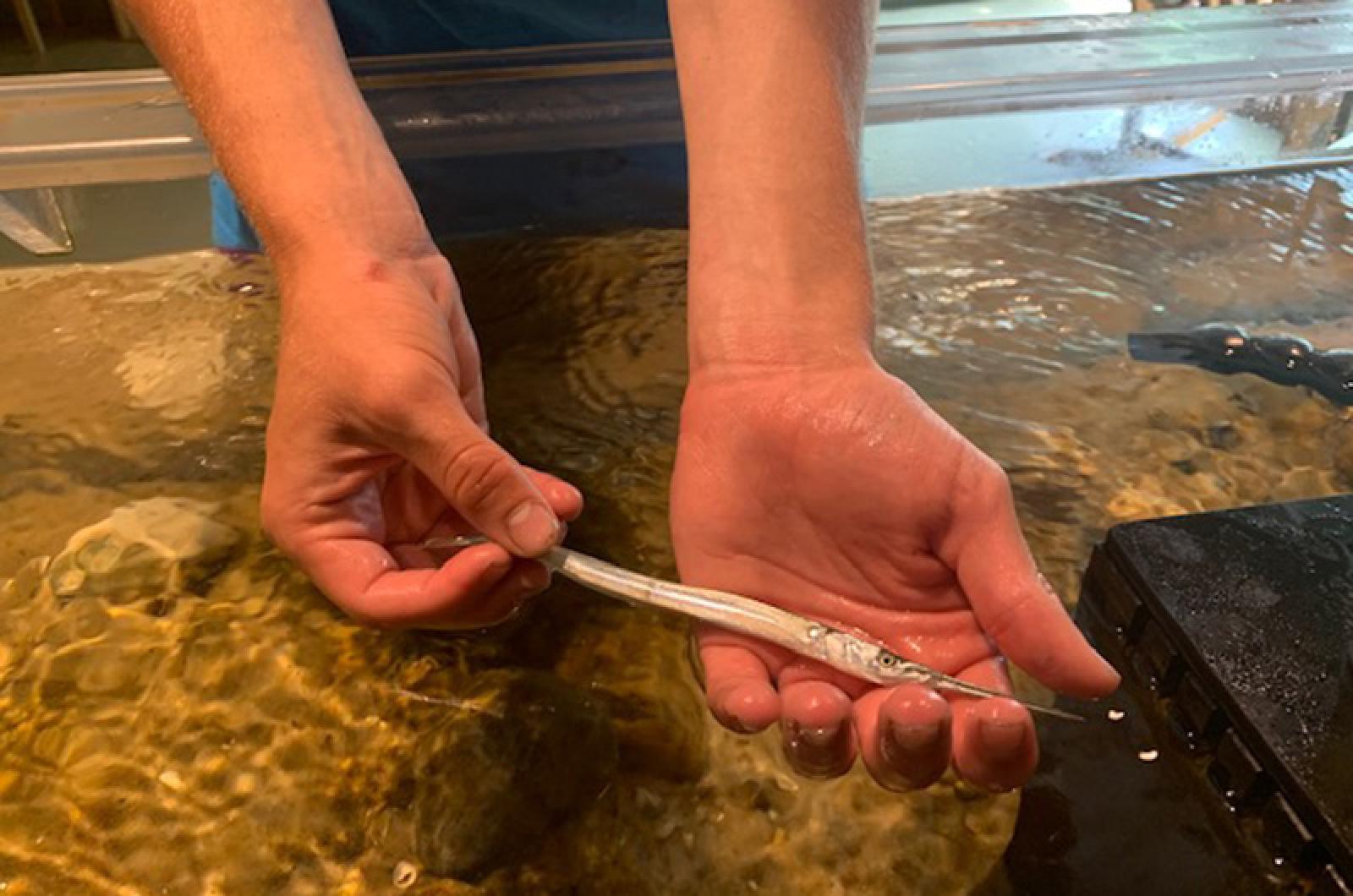Looking sharp is the perfect compliment for an Atlantic needlefish.
Needlefish, notable for a long, needle-like jaw, are making a splash in Sengekontacket Pond. Last week, Felix Neck’s Fern and Feather campers and counselors found five of these sword-like swimmers.
Both predators and prey, needlefish are well known to anglers because they are hunted by striped bass and bluefish as they migrate up the coast. Using look-alike lures is a sometimes successful ploy that anglers use to catch those desired gamefish.
Our local needlefish species, Strongylura marina, can reach up to two feet long, though the ones that we are seeing in the pond are juvenile fish only a few inches long. Swimming on the water’s surface, these fish may seem almost invisible, because of their coloration and shine, which help them blend into the sun-sparkled water. They have platelets in their scales that actually reflect polarized light. This disappearing act doesn’t fool osprey or black skimmers, birds that find and consume needlefish regardless of their light tricks.
A sleek body and wily ways help needlefish catch their own prey. Their anguilliform (eel-like) bodies allow them to undulate for locomotion, and a habit of jumping out of the water provides for often-successful aerial attacks on schools of fish. One species of needlefish can swim up to 35 miles per hour and then launch into the air!
A habit of leaping out of the water has occasionally caused some curious injuries to swimmers, surfers, and the like. Some rare encounters with humans are documented, with the needlefish sometimes leaving its sharp bill behind after impaling it into the face or body of an unsuspecting bather. In other parts of the world, where needlefish species are larger, significant injuries and even a few deaths have been reported as the result of face-to-fish meetings.
Our most common local species should cause little concern and inspire interest rather than fear. Catching a needlefish is a curiosity, and learning about them is a lesson in adaptations. Consider their toothy jaw, which goes through a series of developmental changes as the fish matures because the upper jaw grows more slowly than the lower jaw.
When needlefish first hatch, they have a half-beak appearance, with the upper jaw much shorter than the lower jaw. Small juvenile fish are still half-beaked (if not half-baked), although the upper jaw is catching up to the lower. Finally, both jaws reach equal size at full maturity. These changes make sense, considering the food the fish eats at each growth stage. The smallest fish eat plankton. As they grow and their jaws elongate, shrimp and fish are added to their diet.
Other needlefish oddities include their bone color, which is greenish because of a pigment called biliverdin, the same compound that causes some bruises to be a blue-green shade. A final curiosity of the male’s reproductive system is the presence of a single internal gonad, likely the result of its slender body that doesn’t provide enough girth for the more common dual system.
As interesting as they are, you will have to look sharply to see these sharp-looking fish; it is truly like seeking a needle in a haystack.
Suzan Bellincampi is Islands director for Felix Neck Wildlife Sanctuary in Edgartown and the Nantucket Wildlife Sanctuaries. She is also the author of Martha’s Vineyard: A Field Guide to Island Nature and The Nature of Martha’s Vineyard.




Comments
Comment policy »